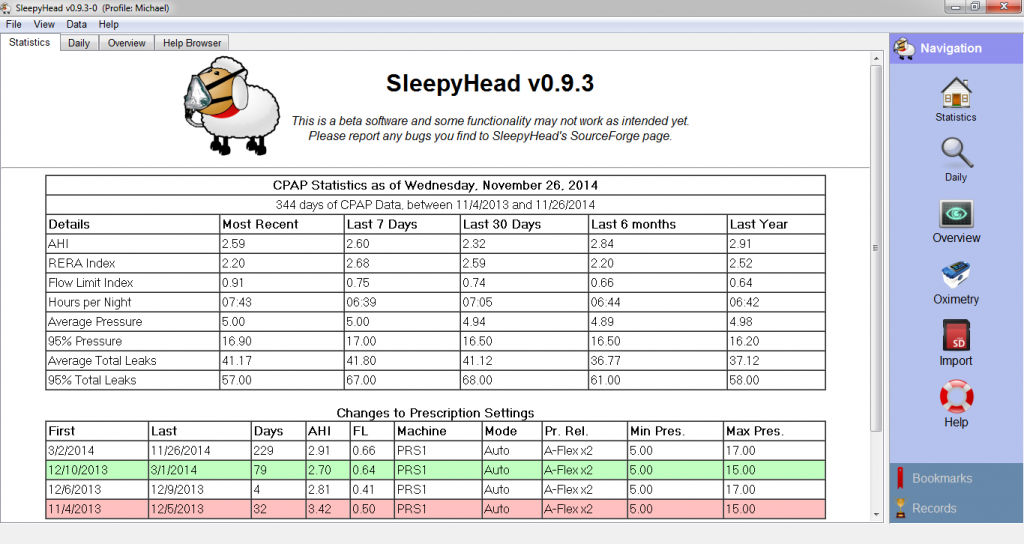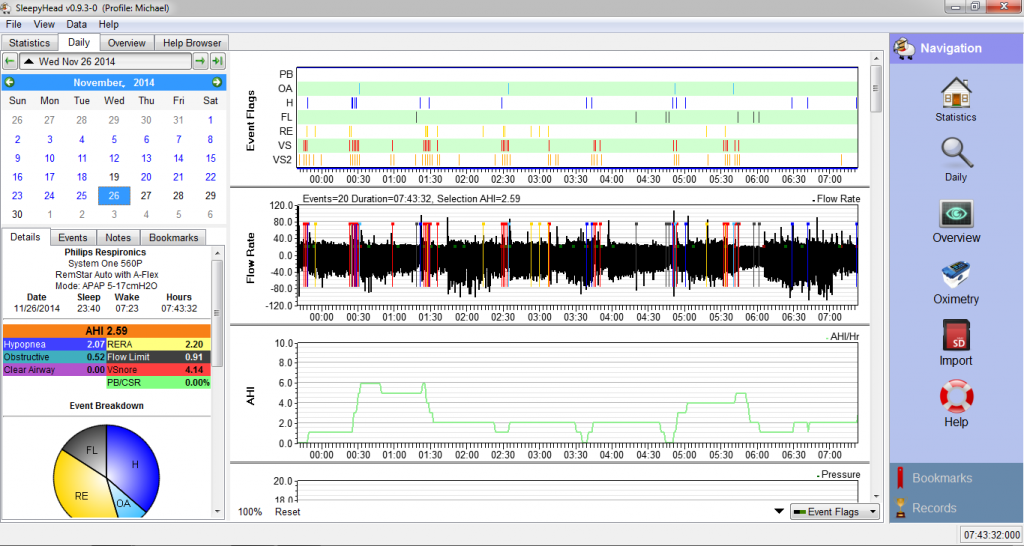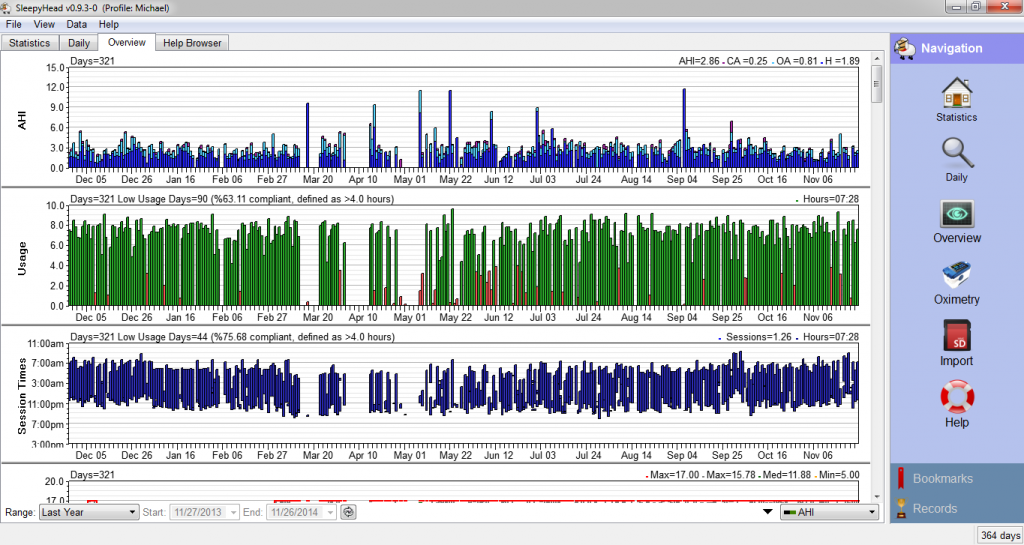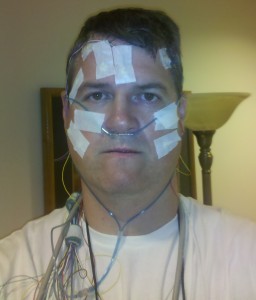I’ve been a hose head for more than a year now and the therapy has definitely helped me although the wife tells me I still occasionally snore. When I went to see my physician I would bring the SD card that fits inside my Phillips Respironics System One. I eventually became curious as to what data my physician was looking at and why couldn’t I explore that data myself.
Thanks to a piece of open source software called SleepyHead written by Mark Watkins I can explore all those data points.
You can see in the figure above that I have 344 days of data. Why not 356+ days of data? When you have a bad head cold that leaves you congested it’s difficult to wear the full mask comfortably. There are a few weeks there were I had to forgo my nightly therapy.
What’s the whole purpose?
While working to prevent events the CPAP machine also tracks the apnea-hypopnea index (AHI) which records the number of times per hour of sleep that your airway partially or completely collapses, leading to a brief arousal or a drop in blood oxygen levels. The partial collapse of the airway is called a hypopnea. The complete absence of airflow through the nose and mouth, despite an effort to breathe as measured at the chest and abdomen, is called an apnea event. The machine stores numerous metrics which can be used to gauge the effectiveness of the therapy itself.
You can review all the data points per day if you so choose;
I used to yawn all the time on my 20-30 minute commute home from the previous job. Occasionally having to literally slap myself to keep more nodding off at the wheel. Now a days I rarely yawn in the car and my commute is usually 60-70 minutes one-way.
Cheers!
Note: This is a series of posts made under the Network Engineer in Retail 30 Days of Peak, this is post number 13 of 30. All the posts can be viewed from the 30in30 tag.



